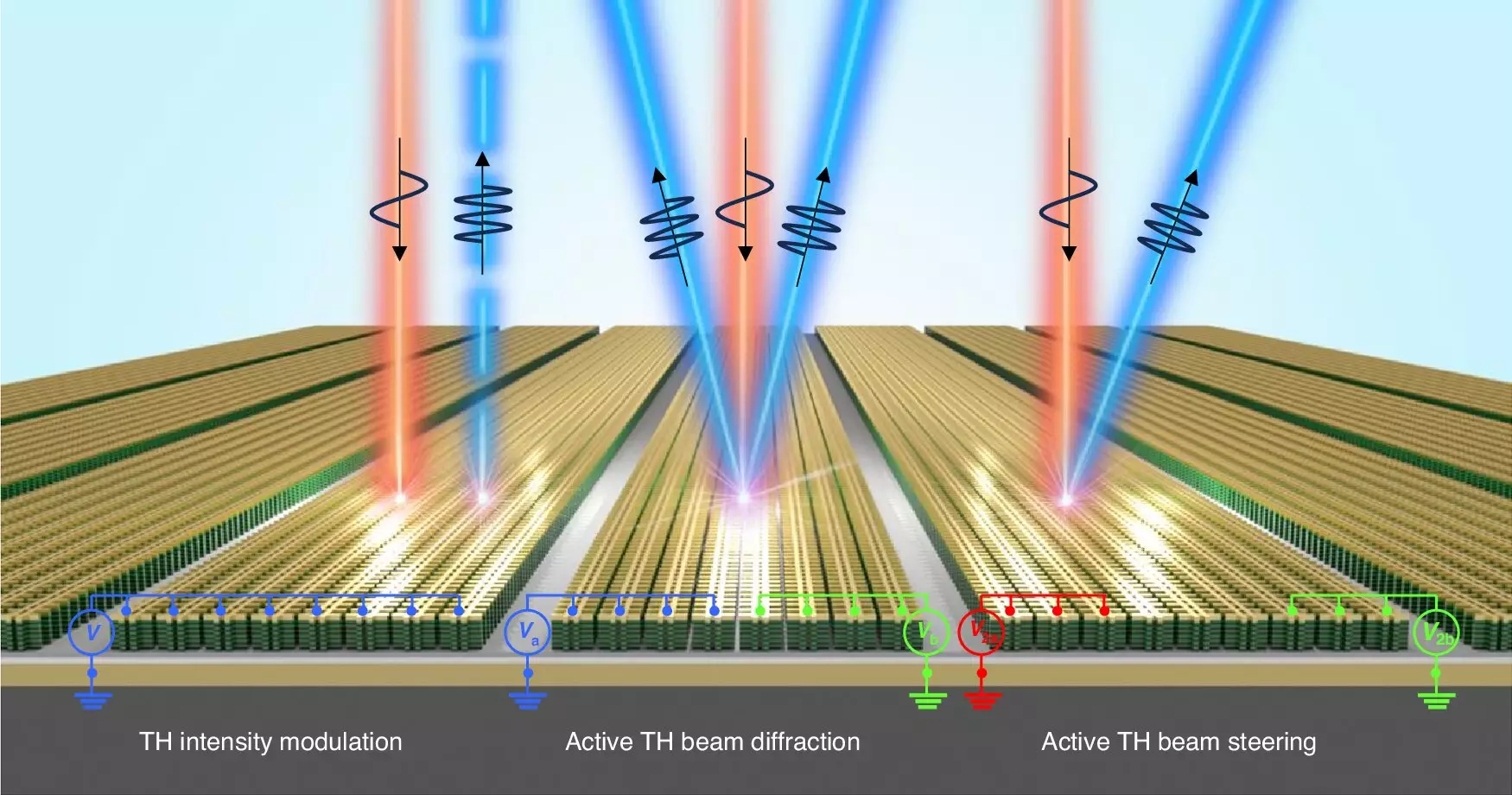Recent advancements in nonlinear optical technology have ushered in a new era of possibilities in communication and imaging applications. The innovative metasurface technology developed by researchers at UNIST, led by Professor Jongwon Lee, holds the potential to reshape how we harness and manipulate light. By utilizing structures smaller than the wavelength of light, this groundbreaking study reveals promising prospects for next-generation quantum light sources and diagnostic equipment used in medical fields.
The researchers unveiled impressive results by successfully implementing electrically tunable third-harmonic generation (THG) using a combination of an intersubband polaritonic metasurface and multiple quantum wells (MQWs). Notably, their findings, published in the journal Light: Science & Applications, demonstrate a remarkable modulation depth of 450% in the THG signal and an 86% reduction in zero-order THG diffraction. These remarkable enhancements highlight the technology’s capacity to facilitate intricate manipulations of light through electrical means.
Moreover, the team achieved significant local phase tuning of more than 180 degrees, allowing for effective beam steering. This capability is crucial for the development of flat nonlinear optical elements that are adjustable and multifunctional, leading to the creation of highly efficient optical devices.
Nonlinear optics is characterized by its ability to produce various wavelengths from a single light beam, thus increasing the efficiency of information transmission compared to traditional coherent light sources. The green laser pointer serves as a prime example of mainstream nonlinear optical technology. The novel metasurface designed by Professor Lee’s team promises the development of ultra-lightweight and compact optical devices with thicknesses that rival paper, utilizing materials thinner than human hair.
This contrasts with conventional techniques that have typically struggled to achieve electrical control over these processes. The new technology stands out due to its ability to modulate THG effortlessly, signifying a monumental shift in nonlinear optical applications.
One of the most groundbreaking aspects of this research is the introduction of voltage control for second-harmonic generation (SHG), accompanied by independent modulation of intensity and phase in THG. Such advancements enable precise manipulation of light characteristics. Professor Lee emphasized the impact of this work, stating, “This advancement allows for unprecedented control of light.”
The implications of this research extend far beyond basic optical manipulation. The capability to adjust both the intensity and phase of light through simple electrical means lays the foundation for a myriad of applications, from cryptography to dynamic holography, as well as in the realms of quantum sensors and communication systems.
The emergence of electrically tunable nonlinear optical metasurfaces represents a significant leap in the field of optics. With capabilities that promise enhanced control and versatility, these innovative technologies could profoundly influence various sectors, establishing new pathways for the development of advanced light-based technologies. As researchers continue to refine these methodologies, the potential applications appear boundless, inviting further exploration into the intricacies of light and its interaction with matter in previously unimaginable ways.

